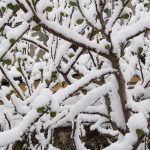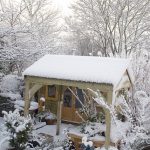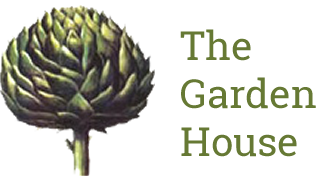How to deal with a snowy garden!
Posted:2 December 2010
When did we last have snow in early December?! Last year it was January, the year before, April – this is becoming a regular if rather unpredictable occurrence!
 So wonderful whilst it’s looking fresh, treacherous underfoot when it gets icy – and downright disaster for the garden if you didn’t prepare in good time (I didn’t!)…
So wonderful whilst it’s looking fresh, treacherous underfoot when it gets icy – and downright disaster for the garden if you didn’t prepare in good time (I didn’t!)…
On the plus side, it’s a great insulator, and it melts to provide much needed water to dry plants in the winter. However, heavy snow and ice build up can cause devastating damage in the garden if limbs and trunks bend or break. Even hardy plants and tough evergreens can also be damaged by prolonged spells of severe cold when soil becomes frozen.
To protect (I know too late this time, but worth remembering!):
- Tie up plants: Before the snow, use plant netting to tie up the branches of your conifers and soft shrubs, to prevent them from being misshapen or broken by snow. Tie them in a cone shape, to deflect snow off to the sides.
- Move containers: Put planters and containers under a shed or porch during snow and ice storms to keep freezing water from expanding and breaking containers.
- Prevent your pond freezing over: Place a rubber ball in any outdoor ponds to prevent them icing over completely, then remove to allow oxygen into the water.
Post heavy snow:
- Look after your garden birds: Dont forget to put out extra food out, clearing snow and ice off bird-tables and most important, fresh water if possible de-ice your bird-baths and top up with fresh water.
- Take care clearing paths: Be careful not to pile snow on your plants when clearing paths as it will then need to be removed and might do damage you can’t prevent.
- Avoid Salt: Salt can damage lawns and plants when it runs off your driveway. If your plants have been exposed to salt, water and rinse them well as soon as temperatures are above freezing. Next time, use sand or clay-based kitty litter instead of salt.
- Take care with damaged trees: Tender branches (particularly conifers) may become broken or weighed down with heavy snow. Broken branches should be pruned away immediately to prevent injury and disease. Ragged tears are very susceptible to infection, so remove damaged wood using clean cuts.
- Remove snow from roofs (if you can safely): Remove the piles of snow that may cascade down onto your shrubs from the roof above. If your shrubs are right in the danger zone under a steep roof, you may want to protect them with a temporary wooden frame.
- Keep off grass: Snow covered grass is fragile, easily uprooted, and susceptible to fungal diseases under the snow. Avoid walking on snow-covered grass as it will damage the turf beneath and leave unsightly marks on the lawn.

Try to save damaged plants:
The extent of the damage often won’t be clear until spring, when you find out if your plant is able to spring back into shape. Wait for spring to do any staking or reshaping of bent plants, since winter branches are extremely brittle. In the spring they’ll be much more supple.
- Cut back frosted growth in spring to a healthy, new bud, to prevent further die back and encourage plants to produce fresh, new shoots.
- Feed damaged plants with a balanced fertiliser (one with equal amounts of Nitrogen, Phosphorus and Potassium) to encourage strong, healthy growth.
- Dig up small, tender plants and take them into the greenhouse. Many will quickly produce new growth and recover, provided they are not subjected to prolonged periods of heavy frost, wet or cold.
- Newly planted specimens will often lift themselves proud of the soil surface if there is a hard frost straight after planting. Check them regularly and re-firm the ground around them to ensure their roots are always in contact with the soil.
Finally – just enjoy the sheer beauty of your snowy gardenscape – take some photos and make a note in your September diary to have your own Christmas cards printed!

